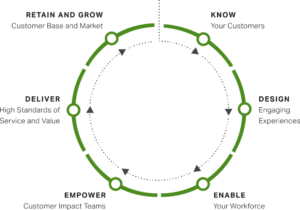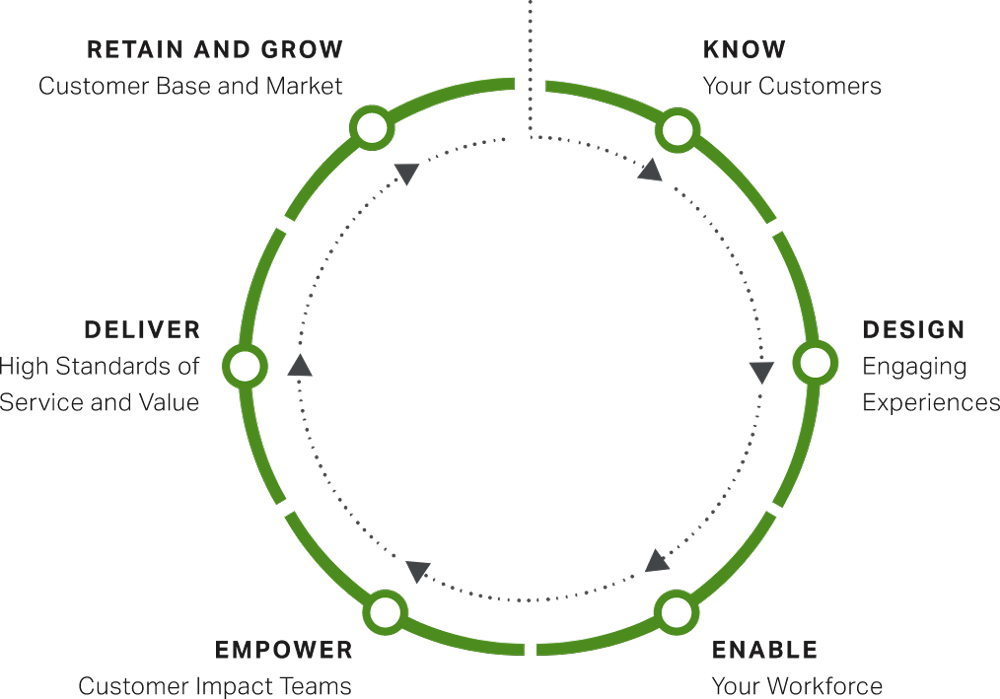Furthermore, Gallup’s increased customer engagement resulted in improved customer success metrics:
- 66% Higher sales growth
- 25% Increase in customer loyalty
- 10% Increase in net profit
- +20 Percentile-point increase in customer confidence
This begins with understanding the customer with empathy. By looking through the lens of curiosity, Gallup accurately collected and analysed data to provide clarity to their clients. They successfully engaged and assisted their clients in achieving their strategic goals.

Customer Centricity, as outlined by Gallup, is a business approach that prioritizes the needs and preferences of customers at the core of all activities. It involves deeply understanding customers, their expectations, and their experiences. Gallup emphasizes that customer-centric organisations tend to outperform their competitors by focusing on these key aspects:
- Understanding Customer Emotions: Recognizing and addressing customers’ emotional needs and experiences is crucial. Emotional connections drive loyalty and long-term relationships.
- Feedback and Data Analysis: Regularly collecting and analyzing customer feedback and data helps in making informed decisions and improving products or services.
- Employee Engagement: Engaged and motivated employees are more likely to provide exceptional customer service, making it essential to prioritize employee satisfaction and development.
- Personalization: Tailoring products, services, and interactions to individual customer preferences enhances the overall experience and fosters loyalty.
- Continuous Improvement: Customer-centric organizations are committed to a culture of continuous improvement, seeking ways to enhance customer satisfaction and loyalty.
- Leadership Commitment: Leadership plays a critical role in driving a customer-centric culture, setting the tone, and ensuring that customer-centric values are integrated into the organization’s DNA.
- Measurement and Metrics: Establishing key performance indicators (KPIs) to monitor customer satisfaction and loyalty helps in tracking progress and identifying areas for improvement.
Overall, Gallup’s concept of Customer Centricity underscores the importance of putting customers at the forefront of business strategies, leading to improved customer relationships, increased loyalty, and ultimately, greater business success.
Source: Gallup’s Customer Centricity
